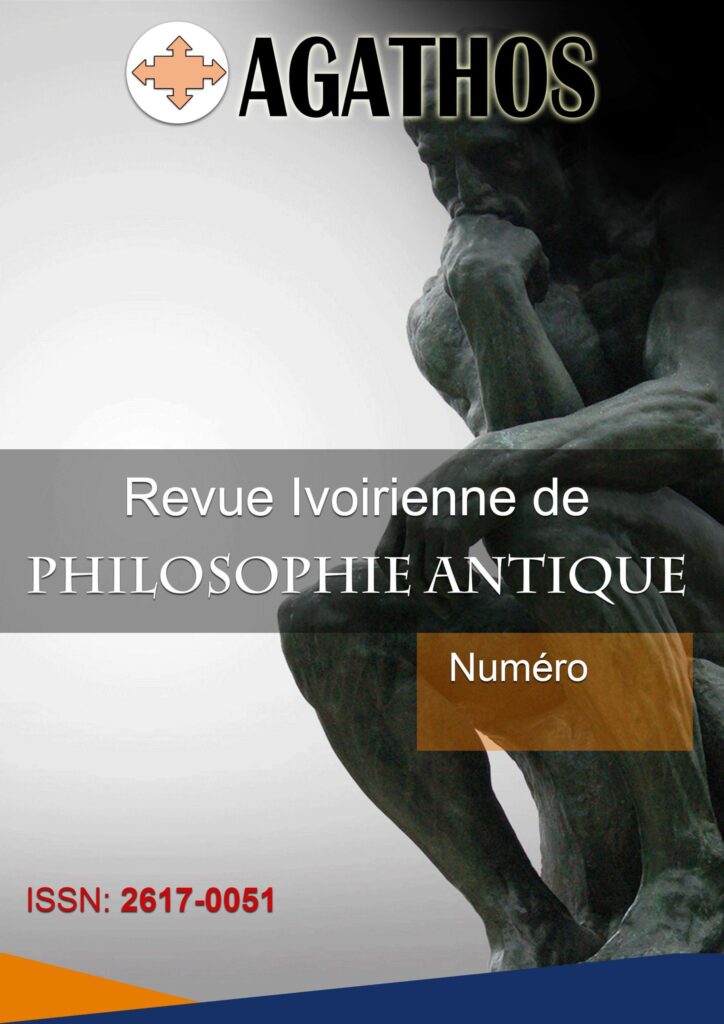
AGATHOS
ISSN-L : 2617-0051
Résumé
Le culte de l’abîme entre l’eikon et l’eidos, entre l’image et l’idée, chez Platon, se heurte au refus d’inscrire l’image dans la radicalité d’une ontologie différentielle avec ce dont elle est l’image. Il découvre, en face de soi, un type de pensée qui avance que l’image est un succédané de son référent, que la copie n’est pas l’autre que l’original, mais plutôt son autre. Aussi lit-il dans le mythe une image de la philosophie, image manifestée par l’analogie de la ligne et le dualisme de l’allégorie de la caverne.
Abstract
The worship of the abyss between the eikon and the eidos, between the image and the idea, comes up against in Plato, with his refusal to inscribe the image in the radicality of a differential ontology with what it is the image. He discovers, in front of one, a type of thought that moves forward that the image is a surrogate of its referent, that the copy is not other than the original, but rather its other one. So he reads in the myth an image of the philosophy, the image shown by the analogy of the line and the dualism of the allegory of the cave.
Mots-clés
Dualisme – Idée – Image – Ligne – Mythe – Philosophie – Platon

Auteur(s)
Donissongui SORO
Université Alassane Ouattara sorodoni2@gmail.com